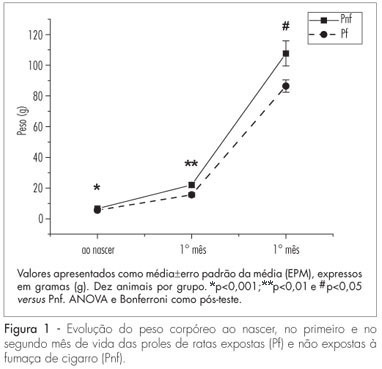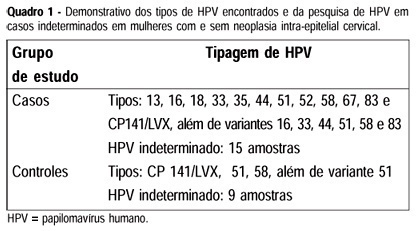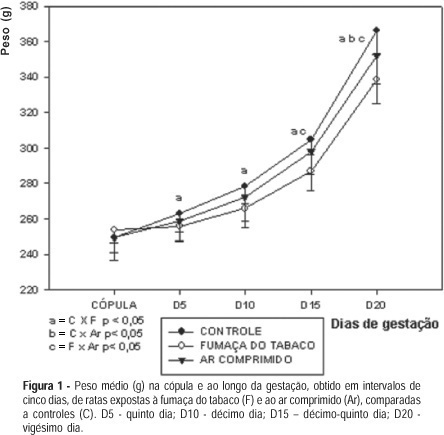Summary
Revista Brasileira de Ginecologia e Obstetrícia. 2016;38(12):609-614
To assess depression, domestic violence and the use of substances in women with recurrent miscarriages.
The Abuse Assessment Screen (AAS), the Edinburgh Postnatal Depression Scale (EPDS) and the Alcohol, Smoking and Substance Involvement Screening Test (ASSIST) were used to assess violence, depression and the use of substances among women with recurrent miscarriages. The population corresponded to patients receiv-ing prenatal care from June to August 2014. Multiple logistic regression was used to assess the multivariable relationship between depression and sociodemographic, psychosocial and medical characteristics (p < 0,10).
The prevalence of depression was of 41.3% (95% confidence interval [CI] 1/4 28.3-55.7%). One third of the pregnant women (32.6%) reported emotional or physical violence, and 13% were classified as abusing or addicted to tobacco according to ASSIST. History of psychiatric diseases was associated with depression (p 1/4 0.005). Violence during life demonstrated a modest association (p 1/4 0.073) with depression, as well as the number of miscarriages (p 1/4 0.071).
Depression is a frequent disease among pregnant women with recurrent miscarriages. The results of this investigation suggest that a systematic assessment of depression and its associated conditions, such as domestic violence and the use of substances, should be part of the prenatal follow-up visits for women with recurrent miscarriages.
Summary
Revista Brasileira de Ginecologia e Obstetrícia. 2013;35(11):490-496
DOI 10.1590/S0100-72032013001100003
PURPOSE: It was to evaluate the frequency and the risk factors of falls in early postmenopausal women. METHODS: A cross-sectional study was conducted on 358 women (age: 45-65 years and amenorrhea >12 months) with time since menopause <10 years. Exclusion criteria were: neurological or musculoskeletal disorders, vestibulopathies, uncorrected visual deficit, uncontrolled hypertension and postural hypotension, or drug use (sedative and hypnotic agents). A fall was identified as an unexpected unintentional change in position which causes an individual to remain in a lower level in relation to the initial position. The history of self-reported falls during the previous 24 months, and clinical and anthropometric data (body mass index (BMI) and waist circumference (WC)) and bone densitometric measures were analyzed. For statistical analysis, c² trend test and the logistic regression method (odds ratio (OR)) were used for the comparison between groups of women with and without falls. RESULTS: Of the 358 women, 48.0% (172/358) had a history of falls and 17.4% (30/172) had fractures. The fall occurred indoors (at home) in 58.7% (101/172). The mean age was 53.7±6.5 years, time since menopause 5.8±3.5 years, BMI 28.3±4.6 kg/m² and WC 89.0±11.4 cm. There were differences as the occurrence of smoking and diabetes, with greater frequency among fallers vs. non-fallers, 25.6 versus 16.1% and 12.8 versus 5.9%, respectively (p<0.05). By evaluating the risk of falls in the presence of influential variables, it was observed that risk increased with current smoking status (OR 1.93; 95%CI 1.01-3.71), whereas other clinical and anthropometric variables did not influence this risk. CONCLUSIONS: In early postmenopausal women there was higher frequency of falls. Current smoking was clinical indicators of risk for falls. With the recognition of factors for falling, preventive measures become important, as the orientation of abolishing smoking.
Summary
Revista Brasileira de Ginecologia e Obstetrícia. 2010;32(12):591-596
DOI 10.1590/S0100-72032010001200005
PURPOSE: to investigate the effect of cigarette smoke exposure on body and tissue weight gain, serum parameters and milk yield during pregnancy and lactation in rats, and the impact on offspring from birth toil young adulthood. METHODS: 40 Wistar pregnant rats were randomly divided into: CG - not exposed to cigarette smoke and sacrificed at the end of pregnancy; CL - not exposed to cigarette smoke and sacrificed at the end of lactation; FG - exposed to cigarette smoke and sacrificed at the end of pregnancy; FL - exposed to cigarette smoke and sacrificed at the end of lactation. The offspring were separated by gender and divided according to their mothers' groups. Tissue weight, body weight and serum parameters were evaluated in rats and offspring. Milk yield per pup was calculated. RESULTS: body weight was decreased in FL during lactation (CL=267.0±7.2; FL=235.5±7.2 g*,*p<0.05). Adipose tissue was not detected in the CL and FL groups, and was reduced in FG compared to CG (CG=3.3±0.3; FG=2.4±0.3 g*, *p<0.05). Rats exposed to cigarette smoke had higher blood glucose levels (CG=113±17, CL=86±16, FG=177±21*, FL=178±23 mg/dL*, *p<0.05 CG versus FG e CL versus FL), CL and FL groups presented lower HDL-cholesterol with no change in total cholesterol. Finally, rats exposed to cigarette smoke had lower milk yield compared to unexposed rats (CL=6.7±0.4, FL=5.4±0.3 g*, *p<0.05). In offspring from the FG and FL groups, there was a decrease of body weight from birth to young adulthood, with no changes in gastrocnemius, liver or heart weights in any group, and adipose tissue was no detected in female offspring. There was an increase in blood glucose in offspring of both sexes from rats exposed to cigarette smoke (males: Pcg=107±10.5, Pcl=115±8.6, Pfg=148±16.8*, Pfl=172±11.2**; females: Pcg=109±27.2, Pcl=104±9.7, Pfg=134±20.0*, Pfl=126±13.3**; p<0.05 *Pcg versus Pfg and **Pcl versus Pfl). CONCLUSIONS: exposure to cigarette smoke provokes impairment of morphometric and serum parameters during pregnancy and lactation both in mothers and offspring, which is maintained during young adulthood.

Summary
Revista Brasileira de Ginecologia e Obstetrícia. 1998;20(7):371-376
DOI 10.1590/S0100-72031998000700001
The purpose of the present study was to evaluate some epidemiological, clinical and pathological characteristics of the different grades of vulvar intraepithelial neoplasia (VIN), and its relation with the presence of human papillomavirus (HPV). The charts of 46 women with VIN, examined from 1986 through 1997, were reviewed. For statistical analysis the chi² with yates correction when appropriate, and Fisher's exact tests were used. Regarding the grade of VIN, six women presented VIN 1, six others had VIN 2 and the remaining 34 presented VIN 3. All women presented similar characteristics such as age, menstrual status and age at first sexual intercourse. Women with more than one lifetime sexual partner had a tendency to show more VIN 3 (p = 0.090). Cigarette smoking was significantly associated with the severity of the vulvar lesion (p = 0.031). HPV was significantly more frequent in women younger than 35 years of age (p = 0.005) and in women with multiple lesions (p = 0.089). Although the number of lesions were not related to the severity of VIN (p = 0.703), lesions with extensions greater than 2 cm were significantly associated with VIN 3 (p = 0.009). The treatment of choice for VIN 3 was surgery, including local resection and simple vulvectomy. Eight women relapsed, and only one had VIN 2. We concluded that among women with VIN, cigarette smoking and more than one lifetime sexual partner were associated with high-grade lesions. HPV was more frequent among patients younger than 35 years of age presenting multiple lesions. Women with VIN 3 presented lesions bigger than 2 cm and a high relapse rate, despite the type of treatment applied.
Summary
Revista Brasileira de Ginecologia e Obstetrícia. 2006;28(6):340-344
DOI 10.1590/S0100-72032006000600004
PURPOSE: the study the effects of maternal cigarette smoking during pregnancy on placental maturation (calcifications) and the placental-uterine circulation, evaluated through umbilical and uterine Doppler. METHODS: prospective cohort study involving 244 pregnant women, 210 of them non-smokers and 34 smokers. Participants were submitted to four serial sonograms. The first was performed up to the 16th week of pregnancy to determine gestational age, and the other three at 28, 32 and 36 weeks for fetal biometry, evaluation of placental texture and Doppler studies of the uterine and umbilical arteries. Premature placental calcification was defined as grade III before 36 weeks. The chi2 and Fisher exact tests were used to compare placental grading, and the Mann-Whitney test to evaluate the resistance index of uterine and umbilical arteries. RESULTS: the frequency of grade III placenta and the resistance of the uterine arteries did not differ significantly between smokers and non-smokers, at all gestational ages. Umbilical artery Doppler was significantly higher in smokers than in non-smokers at 32 weeks. CONCLUSIONS: no association was found between cigarette smoking and premature placental calcification. Smoking was associated with increased umbilical artery resistance at 32 weeks.
Summary
Revista Brasileira de Ginecologia e Obstetrícia. 2006;28(5):285-291
DOI 10.1590/S0100-72032006000500004
PURPOSE: to identify risk factors for cervical intraepithelial neoplasia (CIN) and human papillomavirus (HPV) types among women with CIN, and to compare with HPV types among patients with normal cervix. METHODS: a total of 228 patients were studied, of whom 132 with CIN (cases) and 96 with normal cervix (controls). In the two groups consisting of women selected among outpatients attended in the same hospital, living near the place of the research, mean ages were similar (34.0±8.3 years) and there was a predominance of married women. Possible risk factors for CIN were investigated with the application of a questionnaire surveying age, marital status, level of schooling, age at first coitus, number of pregnancies, number of sexual partners, method of used contraception, reference of previously sexually transmitted diseases (STDs) and smoking habits, with a comparison between the studied groups. Samples were collected for oncologic colpocytology and HPV search through polymerase chain reaction (PCR), using MY09/MY11 primers; then colposcopic and histopathological examinations were performed. For statistical analysis of the association between risk factors and CIN, odds ratio with 95% confidence interval and chi2 and Fisher tests were used at a significance level of 0.05. The logistic regression method with the significance expressed by the p value with maximum likelihood was also applied. RESULTS: the following variables remained in the logistic regression model: HPV infection of high oncogenic risk (OR=12.32; CI 95%: 3.79-40.08), reference of previous STDs (OR=8.23; CI 95%: 2.82-24.04), early age at first coitus (OR=4.00; CI 95%: 1.70-9.39) and smoking habit (OR=3.94; CI 95%: 1.73-8.98). PCR was positive in 48.5 and 14.6% in the case and control groups, respectively. CONCLUSIONS: the main risk factor for CIN was oncogenic HPV infection, with types 16, 18, 33, 35, 51, 52, 58, and 83. Among patients with a high-degree lesion, there was a predominance of HPV-16 or type 16 variant. In patients with normal cervix oncogenic, HPV types 51, 58, and 51 variant were also identified.

Summary
Revista Brasileira de Ginecologia e Obstetrícia. 2006;28(3):143-150
DOI 10.1590/S0100-72032006000300002
PURPOSE: to analyze the effect of cigarette smoke on weight gain and food consumption of female pregnant rats, as well as of their offspring's weight and length at birth METHODS: Wistar rats were studied from the second day until the end of pregnancy. Fifty-one female rats were divided into three groups: Group F: 15 rats exposed to tobacco smoke (2 cigarettes/animal/day) plus air flush (10 L/min); Group Air: 18 rats exposed to air flush only (10 L/min); Group C: 18 non-exposed, non-manipulated controls. Body weight was measured every 5 days and food consumption every seven days (expressed as medium consumption per day). Offspring weight and length were measured on the first day of life. The Lavene test was used to verify the behavior of numeric variable distribution and for parametric one-way ANOVA analysis and Student's t test were used, according to the case. Results with p<0.05 were considered to be statistically significant. RESULTS: the rats of Group F consumed less food per day [Group F=18.9 g (±1.2) vs Group Air=21.7 g (±1,6) vs Group C=24.2g (±1,7); (p<0,05)], gained less weight during pregnancy than the animals of the air flush group and the control group: Group F=338.9 g (±13.7) vs Group Air=352.3g (±15,9) vs Group C=366.3 g (±13.1) (p<0.05). Pups birth weight and length were significantly smaller in the smoking group when compared to controls and to the air flush group, while these last two groups did not differ: Group F=5.5 g (±0.3) vs Group Air=5.9 g (±0,5) vs Group C=5.9 g (±0.4) - (p<0,01); Group F=6.8 cm (±0.2) vs Group Air=6.9 cm (±0,2) vs Group C=6.9 cm (±0.1) - (p<0.05), respectively. CONCLUSIONS: tobacco smoke exposure reduced the weight gain and food consumption during pregnancy and reduced the offspring weight and length evaluated at birth.
